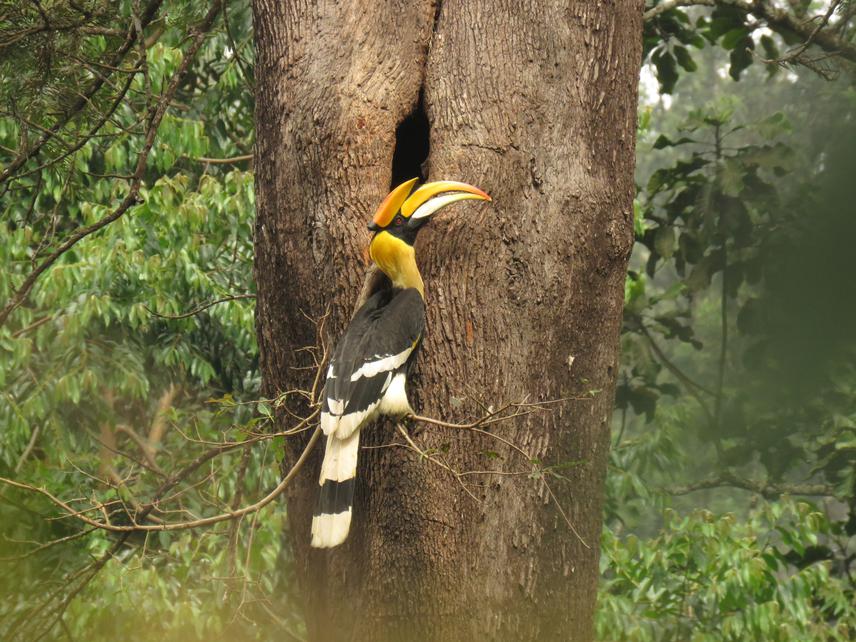Pooja Yashwant Pawar
Commercial plantations across wider landscapes around tropical protected areas are gaining importance as potential habitat for conservation of endemic and threatened species. In a tea and shade-coffee plantation landscape in the Anamalai Hills, Western Ghats biodiversity hotspot, I will assess the role of plantations and fragments for hornbill conservation beyond protected areas containing contiguous rainforests. I will estimate hornbill population density and structure, map critical hornbill food species and a keystone resource (large Ficus trees) and monitor hornbill use and breeding status at 100 nest trees with local stakeholder involvement. The results will help extend hornbill conservation to wider tropical landscapes.

A male Great Hornbill at the nest. © Pooja Pawar.
Hornbills, although threatened by habitat loss, fragmentation and hunting in tropical forests may survive and breed in degraded and modified habitats provided large nest and food trees are available.
The project aims to establish hornbill population baselines and map critical hornbill resources (nest and fruit trees) that will enable long-term monitoring and conservation measures. This study focuses on two endemic species Malabar Grey Hornbill (Ocyceros griseus) and Malabar Pied Hornbill (Anthracoceros coronatus) in Western Ghats and one globally threatened species Great Hornbill (Buceros bicornis). The project will enhance understanding and appreciation of hornbills as flagships of forest conservation among local stakeholders in the landscape. Establishing hornbill population structure and densities, and nesting status of hornbills in relation to critical resources (nest and fruit trees) in protected forests and plantations in a key biodiversity conservation landscape, will assist develop a scientifically informed long-term hornbill monitoring and management protocol for stakeholders including government authorities.